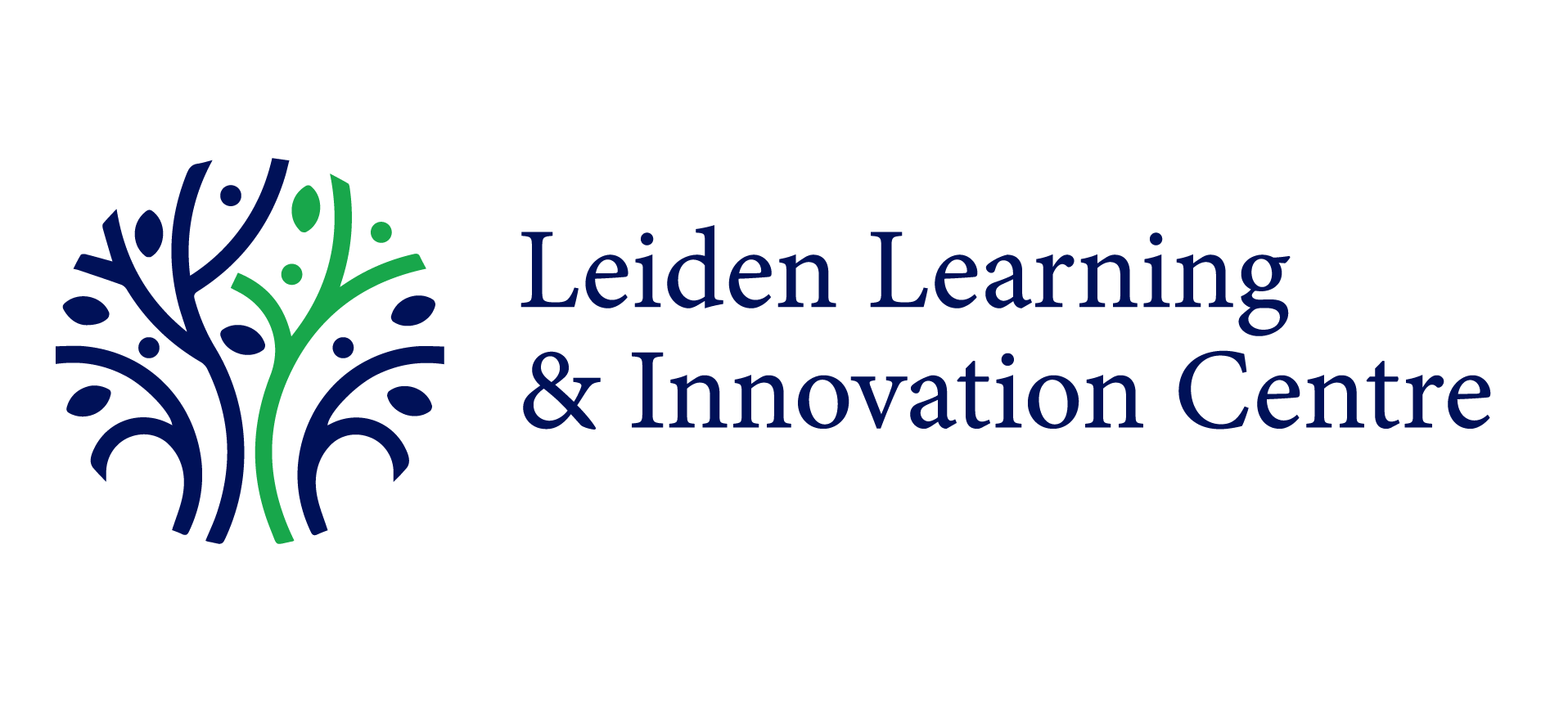Supporting Innovations Based on Organisational Maturity: Insights for Universities
Universities worldwide are increasingly called upon to foster educational innovation while ensuring scalability and long-term impact. Innovation efforts, however, often encounter challenges such as limited scalability, inadequate infrastructure, or misaligned strategic priorities. Using frameworks like the EMBED Maturity Model and adopting differentiated innovation strategies can enable universities to allocate resources effectively and focus on innovations best suited to their maturity level.
This article explores how institutions can maximise the impact of their innovation ecosystems by strategically aligning resource allocation with organisational readiness.
Understanding Organisational Maturity and Innovation Typologies
The EMBED Maturity Model, developed by experts across European universities, provides a comprehensive framework for assessing the maturity of blended education at institutional, program, and course levels. Maturity in this context refers to the degree of formalisation, optimisation, and evidence-based practices embedded in an institution’s approach to blended education.
Higher levels of maturity correlate with improved governance, infrastructure, and support systems, enabling the organisation to take on more ambitious innovations. Although the EMBED model is one example of how institutions can measure maturity, organisations should select a model that best fits their unique needs and contexts. What is most important is that institutions can identify how advanced they are in different aspects of blended education delivery and support, ensuring that their innovation strategies align with their capabilities.
Pisano (2015) presents one example of how to categorise innovations, using a typology of routine, disruptive, architectural, and radical innovations. This typology provides a framework for understanding the scope and complexity of different innovation types. Routine innovations enhance existing systems and are easier to scale, especially in institutions with lower maturity levels. By contrast, disruptive and radical innovations challenge the status quo, requiring sophisticated governance, infrastructure, and long-term support. This makes them more suitable for institutions at higher maturity levels.
There are many ways to categorise innovations, such as the framework proposed by Toma, Gons, & Viki (2017). This categorises innovations by their proximity to core business activities, such as core, adjacent, and transformational innovations. Organisations should choose the method that best fits their specific context. What is crucial is that they can classify innovations in a way that highlights the scale of the challenge—whether it involves a skill gap for teachers, significant changes to infrastructure, or other barriers to implementation. By understanding the magnitude of the leap required, institutions can allocate resources and plan strategically for success.
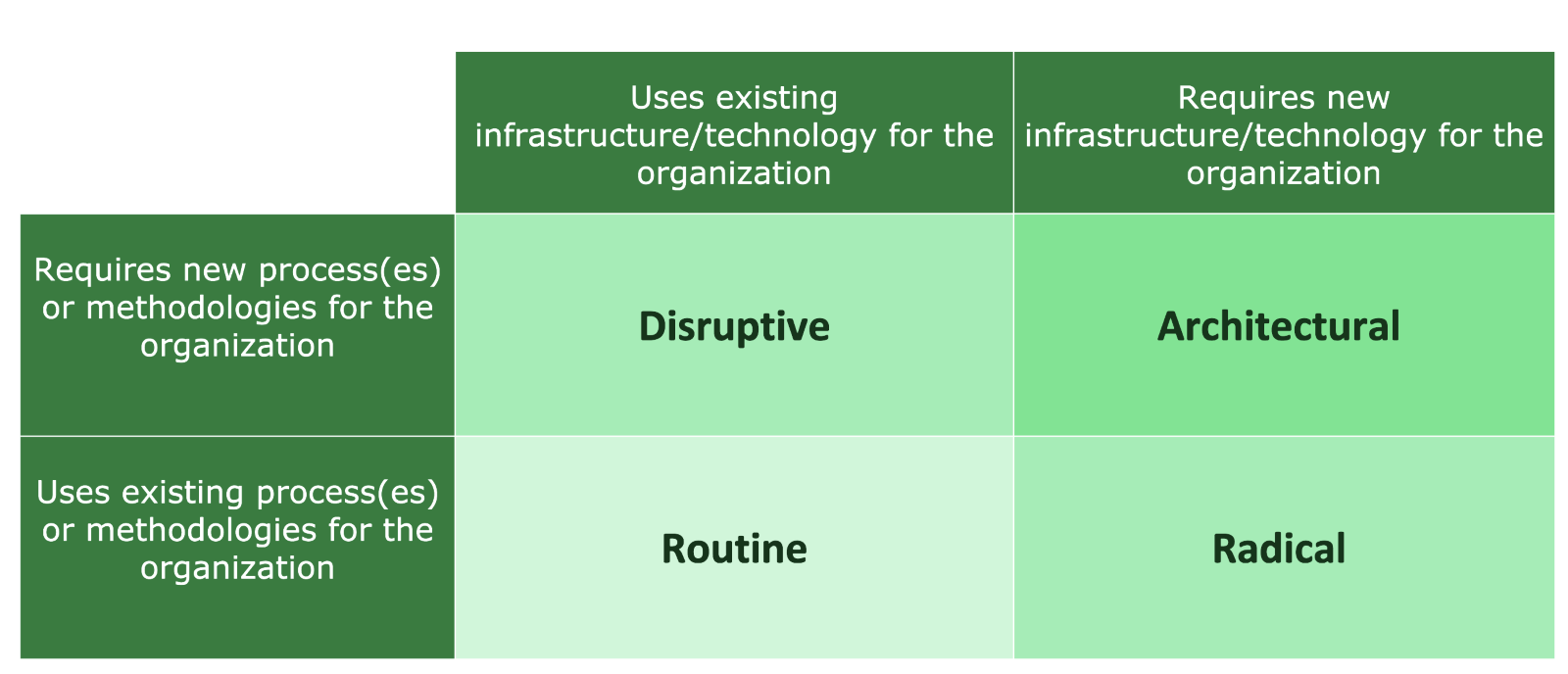
Types of Innovation. Adapted from Pisano 2015.
Why Routine Innovations Matter for Less Mature Institutions
For institutions at the early stages of their maturity journey, routine innovations provide the foundation for sustainable growth. These innovations optimise existing educational practices by integrating tools, processes, or methodologies that enhance efficiency without requiring substantial systemic changes. Using language from the EMBED framework, institutions at the “Ad Hoc” or “Consolidated” levels of maturity would benefit most from focusing on routine innovations, as these projects typically align with available infrastructure and governance capabilities.
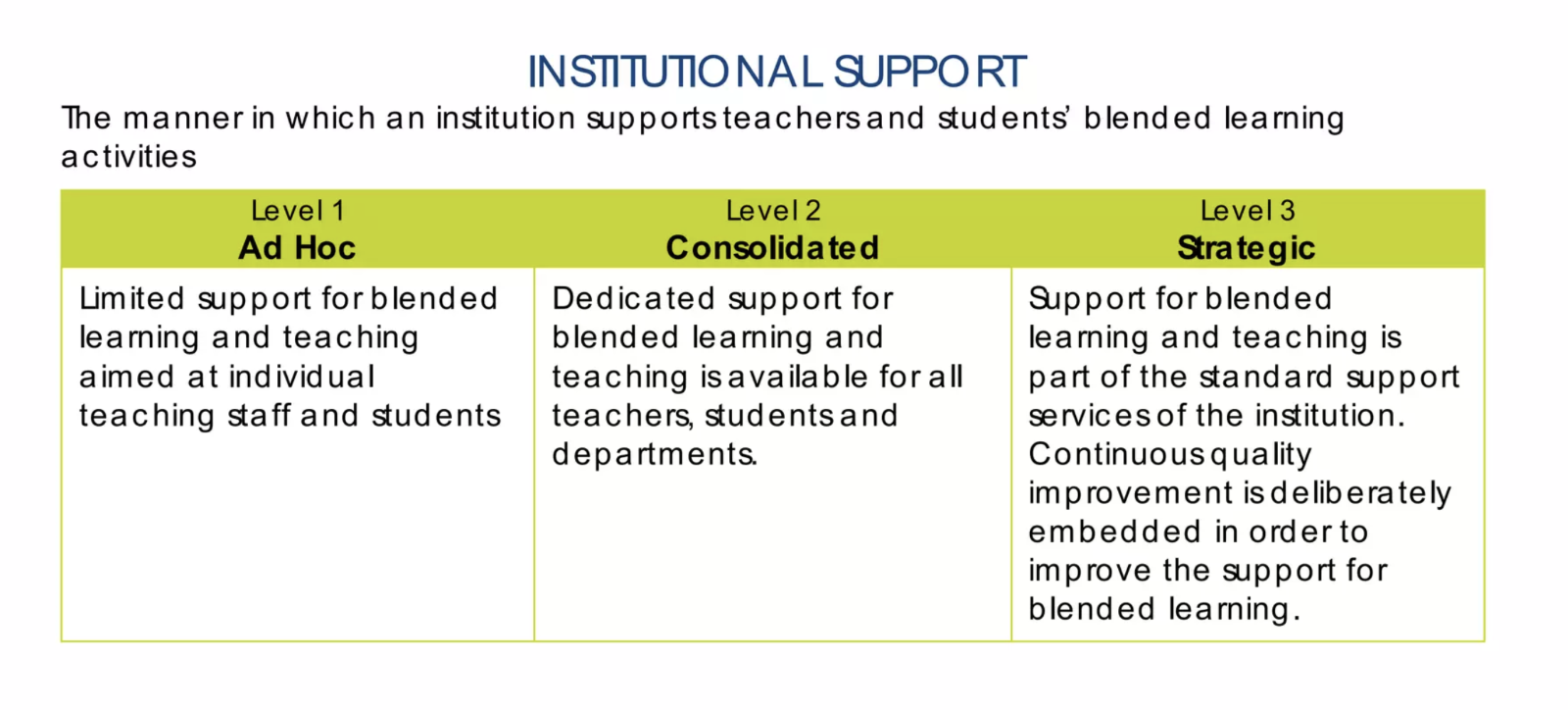
Image by EMBED.
Routine innovations are also easier to scale across faculties and departments, ensuring immediate impact. For example, transitioning from basic online course content to structured blended learning practices could improve student engagement while laying the groundwork for more ambitious projects in the future.
Investing in Disruptive and Radical Innovations for Mature Institutions
Institutions with higher maturity levels, as outlined in the EMBED model’s “Strategic” category, are well-positioned to take on disruptive, radical, or even architectural innovations. These types of innovations— for example, fully immersive virtual learning environments or AI-driven adaptive learning systems—have the potential to transform education but require significant investment in governance, cross-departmental collaboration, skill development for users, and stakeholder buy-in.
These innovations face substantial barriers to scaling, including the need for institutional alignment and robust technical infrastructure. To overcome these challenges, mature institutions must establish clear criteria and support systems for selecting and nurturing such projects. Aligning innovations with long-term strategic goals and embedding them within existing policies can, for instance, ensure their sustainability.

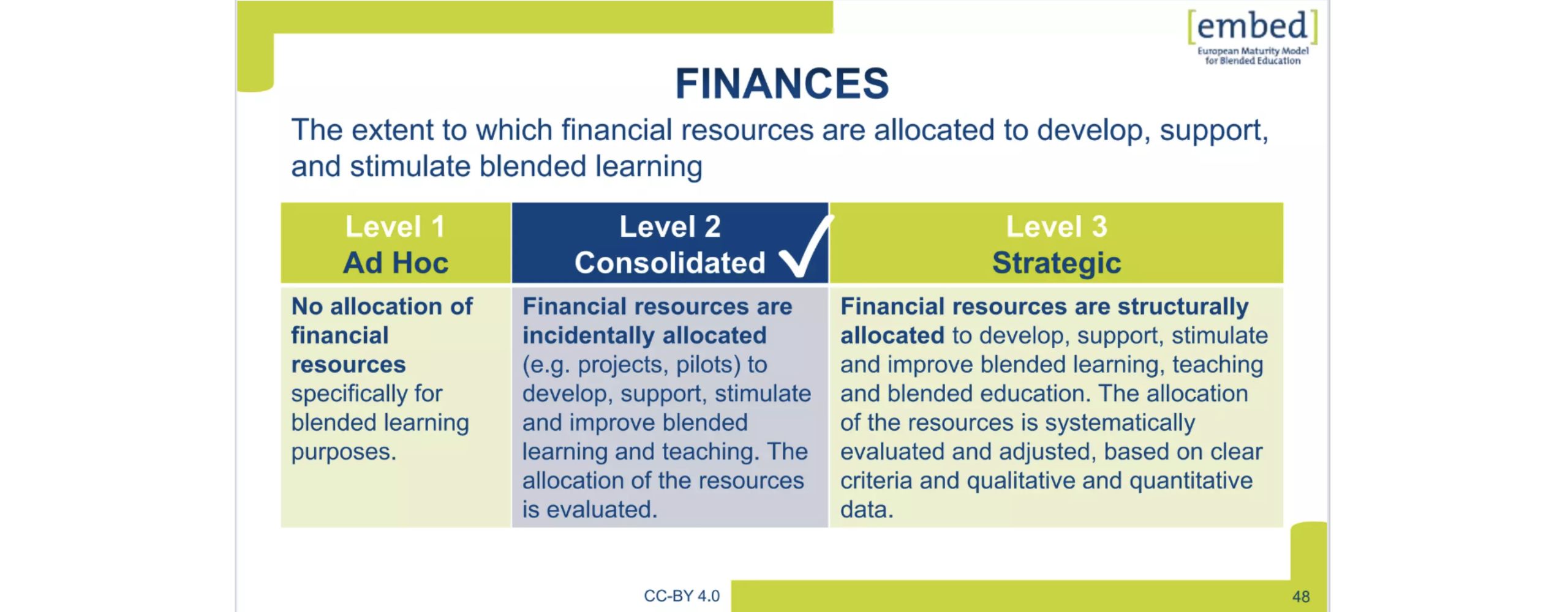
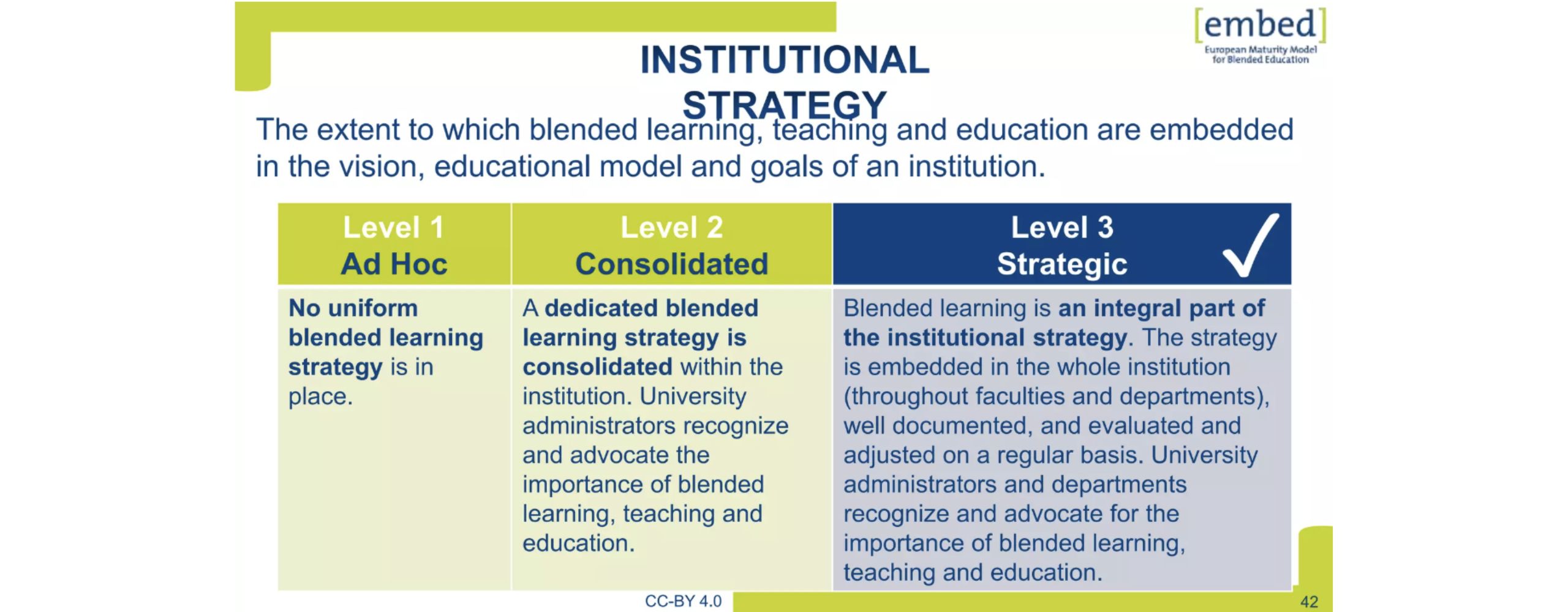
Some examples about how different aspects of institutional support can be measured for maturity. Images by EMBED.
Recommendations for Supporting Innovations Across Maturity Levels
- Assess Institutional Readiness: Universities should regularly evaluate their maturity level using tools like the EMBED model. This allows for a clear understanding of which innovations align with their current infrastructure and strategic goals.
- Differentiate Resource Allocation: Routine innovations should receive more resources in less mature contexts, while mature institutions can afford to prioritise high-risk, high-reward projects such as disruptive and radical innovations.
- Establish Clear Governance Structures: Innovation boards or councils should be introduced to ensure alignment between project selection and institutional priorities. These boards should include representatives with expertise in innovation methodology and long-term scaling as well as the technical, operational, and didactical expertise necessary to assess innovations’ effectiveness.
- Build Infrastructure for Scaling: Regardless of maturity level, investments in basic infrastructure—both technical and organisational—are critical to scaling innovations effectively.
Conclusion
Supporting educational innovations requires universities to adopt a nuanced approach based on their organisational maturity. Routine innovations offer a scalable starting point for less mature institutions, while disruptive and radical innovations can unlock transformative potential in mature contexts. By leveraging frameworks like the EMBED Maturity Model and aligning resources with institutional readiness, universities can build resilient innovation ecosystems that drive sustainable educational change.
If universities aim to maximise the impact of their innovation investments, they must prioritise strategic alignment, infrastructure development, and differentiated resource allocation. Only then can they ensure that their innovations meet the dual goals of scalability and long-term relevance in an ever-evolving educational landscape.
References
Crossan, M. M., & Apaydin, M. (2010). “A Multidimensional Framework of Organizational Innovation.” Journal of Management Studies, 47(6), 1154-1191.
Geiger, S. W., & Makri, M. (2006). “Innovation Selection Processes: A Comparative Study of Interactive Approaches.” Journal of Business Venturing, 21(3), 318-333.
Murray, F., & Tripsas, M. (2004). “The Role of Interactive Evaluation in Selecting Innovative Ideas.” Management Science, 50(5), 604-619.
O’Connor, G. C., & Rice, M. P. (2013). “Structured Approaches to Managing Innovation.” Research-Technology Management, 56(4), 43-54.
Pisano, G. P. (2015). “You Need an Innovation Strategy.” Harvard Business Review. Retrieved from https://hbr.org/2015/06/you-need-an-innovation-strategy.
Rogers, E. M. (2003). Diffusion of Innovations (5th ed.). Free Press.
The European Maturity Model for Blended Education (EMBED). (2020). European Association of Distance Teaching Universities (EADTU). Retrieved from https://embed.eadtu.eu/.
Tidd, J., & Bessant, J. (2020). Managing Innovation: Integrating Technological, Market, and Organizational Change (7th ed.). Wiley.
Toma, D., Gons, E., & Viki, T. (2017). The Corporate Startup: How Established Companies Can Develop Successful Innovation Ecosystems. Vakmedianet Management Impact.
